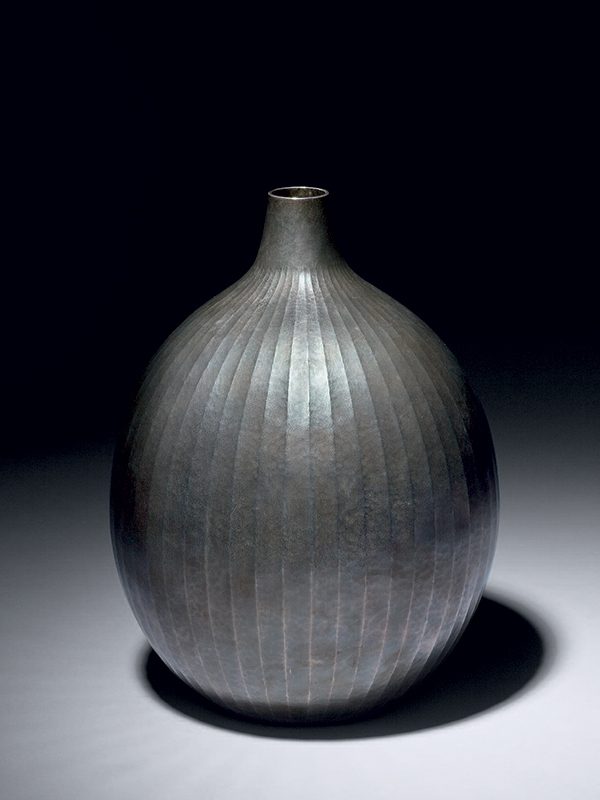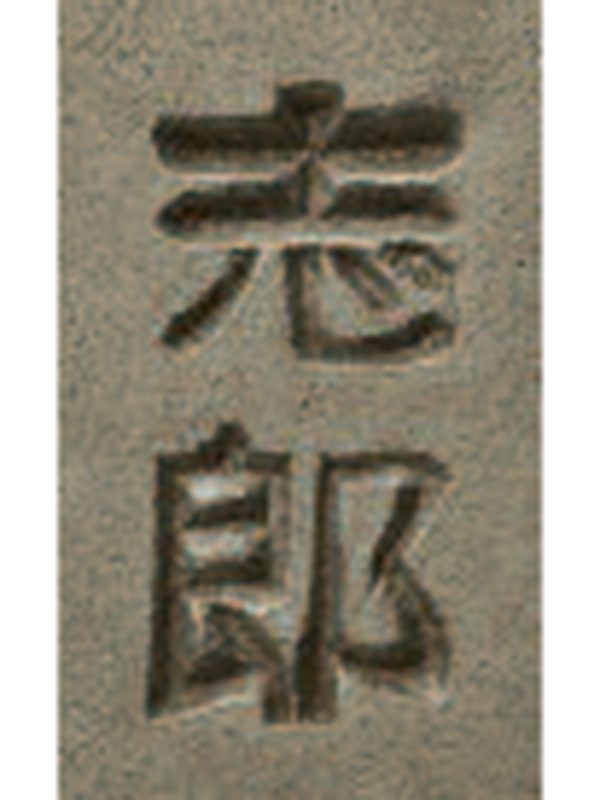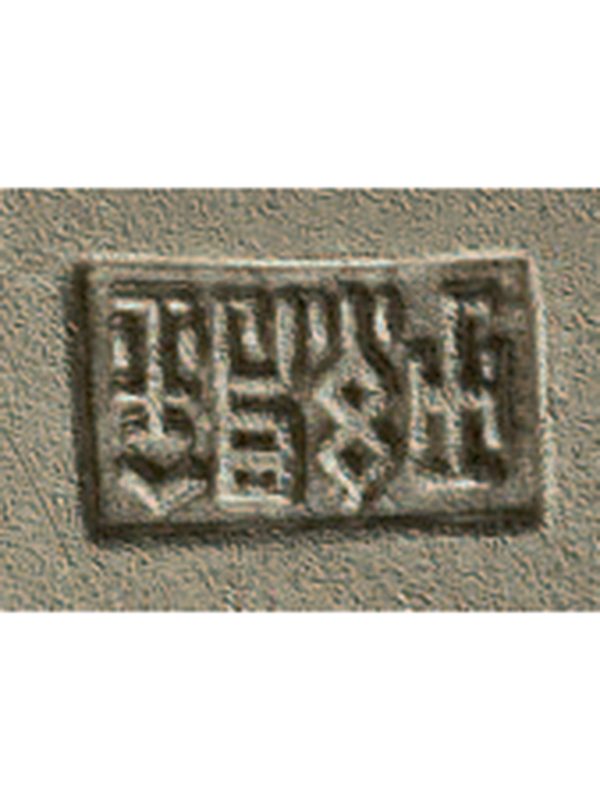Uchidashi silver vase by Sekiya Shirō (1907 - 1994)
A hammered silver vase of rounded form. The globular body rises upwards from a slightly recessed base. A short tapered neck surmounts the body and terminates in a flat rim. The surface of the body is formed by a series of narrow, vertical facets. The hammering technique results in a lightly dappled surface with an iridescent silver patina. With original tomobako, inscribed on lid: Shimamon uchidashi gin kabin, Shirō saku, with the seal Shirō (Stripe design, handhammered work, silver flower vase, made by Shirō with the seal Shirō). The base is stamped with a mark ‘Jungin’ (pure silver) and the two-character mark of the maker.
Sekiya Shirō was nominated a Living National Treasure (Ningen kokuho) in 1977. He was born in 1907 in Akita Prefecture, and moved to Tokyo in 1928 to study under Kawachi Muneaki (1888 – 1962). Sekiya Shirō exhibited extensively at the Nihon Tankin Kyokai (Japan Hammered Metal Art Association), Nitten, and Nihon Dento Kogei (Japan Tradition Art Crafts) exhibitions and was awarded numerous prizes. He is known for his skills in uchidashi (the hand-hammered technique) and also for joining metal sheets. The latter technique is known as hagiawase, and is a signature of his unique style. Sekiya died on the 3rd of December, Heisei 6 (1994). Examples of Sekiya’s work can be found at the Tokyo National Museum of Modern Art.[1]
- See: Tokyo National Museum of Modern Art, 2009 exhibition Inviting Coolness for an example of Sekiya Shirō’s work.



